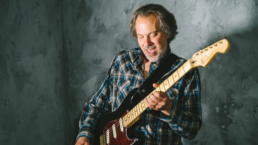What Makes a Guitar Solo Great?
Every guitar fan loves a great guitar solo.
If you’re a confident lead player, the guitar solo is the part of the song where you get to strut your stuff. In the heyday of classic rock in the 70s and 80s, guitar solos were almost obligatory, Players like Eddie Van Halen, Randy Rhoads, Yngwie Malmsteen, and Steve Vai pushed the boundaries of what was expected and even possible.

Rock music split in the 1990s with the advent of grunge. Pyrotechnics gave way to riffs and down-tuned muscle as virtuosity went out of fashion. Some of the best guitar playing on the radio in the mid-90s was not in pop or rock music at all, as hot Nashville pickers like Brent Mason ripped out more notes in a country solo on a clean Telecaster than 10 minutes of modern rock radio.
Another approach had also been brewing all along. There was no room for guitar solos in the punk movement of the 70s, which was in some ways as a reaction to their prevalence in rock. But as punk diversified into new wave, guitarist like U2’s The Edge and The Police’s Andy Summers started carving out a more textural sound, influencing players from Rush’s Alex Lifeson to Radiohead’s Johnny Greenwood. Johnny Marr, Peter Buck and James Honeyman-Scott brought aggressive jangle with The Smiths, REM and The Pretenders.
These stylistic extremes might seem to have little to do with each other. But every guitarist’s first responsibility is to serve the song. In the best bands, the musicians serve the song with a personal style and sound, and these are often the players with the most impact.
The best guitar solos are memorable in themselves because they accomplish all of those things. The number of notes is not what makes the impact, or necessarily even the notes themselves.

It’s the intersection of energy, tone, dynamics, melody, and phrasing, and how those things taken together create a powerful statement.
A solo can have lots of notes and still have all these qualities. The point isn’t whether or not the solo is virtuosic. Virtuosity is an option if you have the chops, and sometimes the only natural choice. But regardless, the solo should feel like an integral and essential part of the song. Dynamically, it creates an energetic build that carries the listener to the song’s climax. Sometimes melody isn’t even the point but sheer power, or open space, or glorious noise.
This is what you listen to first: what the song wants, and what you can do to contribute to it. Think of your soloing as songwriting – after all, improvisation is spontaneous composition. Strive above all to be memorable, whether you use a few notes to do it or sheets of sound.
If you want to learn more about melody and phrasing, there are numerous courses on JamPlay on the subject. This is a great place to start!
Interested in learning to solo on guitar? Check out JamPlay.com. JamPlay has over 450 guitar courses from 120+ instructors, and online guitar lessons tailored to every skill level, music genre, and playing style. Click here to learn more.
Dave Isaacs has established himself as a guitar teacher extraordinaire, having built a strong set of educational curriculums for beginner, intermediate, and advanced guitar players alike. Dave shares his expertise largely through video platforms, but also through his thoughtful writing. You can take guitar lessons from Dave Isaacs via his comprehensive video guitar courses on JamPlay.com.
Share this
Become a JamPlay member for unlimited access to 7000+ guitar lessons and 120+ artists and instructors. View membership plans ›




